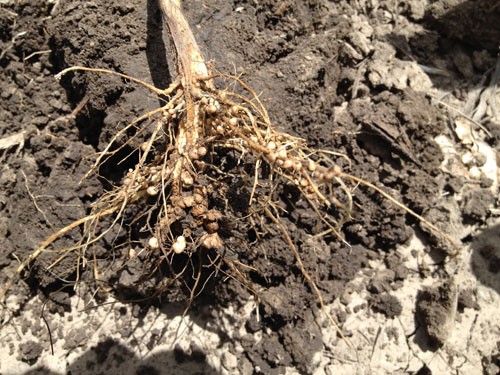 Figure 1. The large number and size of nodules is one sign of an adequate environment for nitrogen fixation of Bradyrhizobium species. (Photo by Nathan Mueller) (Taken from UNL CropWatch article)
Figure 1. The large number and size of nodules is one sign of an adequate environment for nitrogen fixation of Bradyrhizobium species. (Photo by Nathan Mueller) (Taken from UNL CropWatch article)
- If soybeans have been in a rotation on the field, an inoculant is not normally recommended.
- Most universities recommend that if the field has not grown soybeans in the last 3 or more years an inoculant may help to prevent a yield loss.
- Some environmental conditions, such low pH, floods, and drought may increase the need for periodic inoculation even in fields with a history of soybean production.
- Care must be used when storing and handling these products as they contain a living bacteria.
Soybeans form a symbiotic (mutually beneficial) relationship with nitrogen-fixing bacteria that live in the soil (Figure 1). In this relationship, Rhizobia bacteria fix atmospheric nitrogen into a plant available form in exchange for plant-derived carbon. Because soybeans are the host for the bacteria, if soybeans are grown in rotation the bacteria will persist in the soil. However, if soybeans have never been grown or have not been grown in an area for several years, the bacteria can become depleted from the soil. Consequently, if soybean is planted in these situations the soybean crop may not have with sufficient nitrogen available to it.
Soybeans grown in fields without adequate populations of Rhizobia will develop symptoms and issues related to nitrogen deficiency and require added applied nitrogen. A more cost-effective choice is to use a Rhizobial seed treatment when first adding soybeans to crop rotation or if it has been three or more years since soybeans were last grown. Additionally, some soil conditions negatively affect the survivability of rhizobia bacteria and may need to be periodically inoculated to support adequate population levels. These soil conditions include: 1) soils with low pH below 6.0, 2) flood conditions where soils have been under water, and 3) dry or drought conditions, especially in sandy soils.
Rhizobial seed treatments contain living bacteria and require specific handling instructions that can be found on the product label. In general, the safest approach is to buy fresh inoculum and store it in a cool place, away from sun exposure. Please check the product label for specifics on the preplant application interval and how to best apply with a fungicide (Do not mix!). Table 1. lists several products for use as soybean inoculants. As always, follow all label directions.

Table 1. Inoculants that can be used to supplement or reestablish populations of Rhizobia in soybean fields.